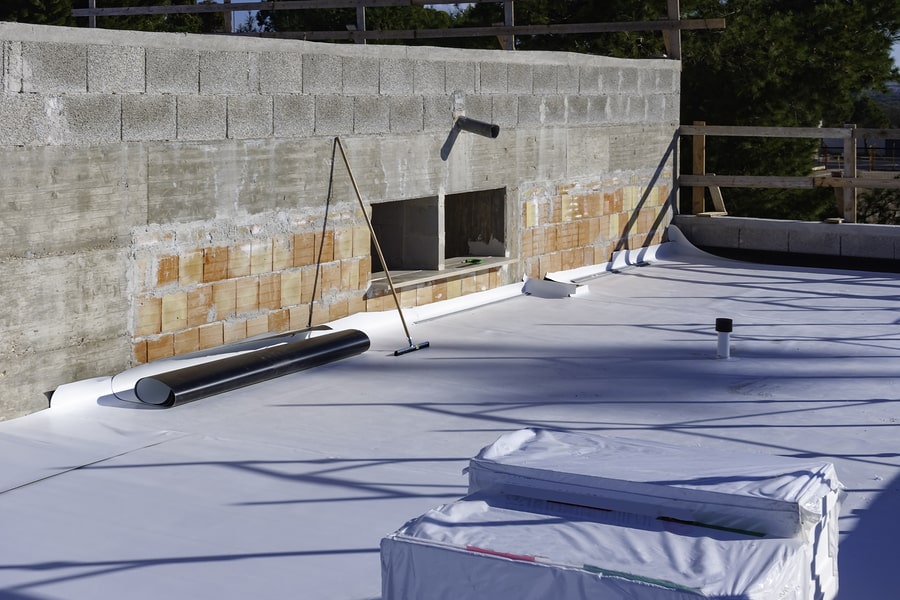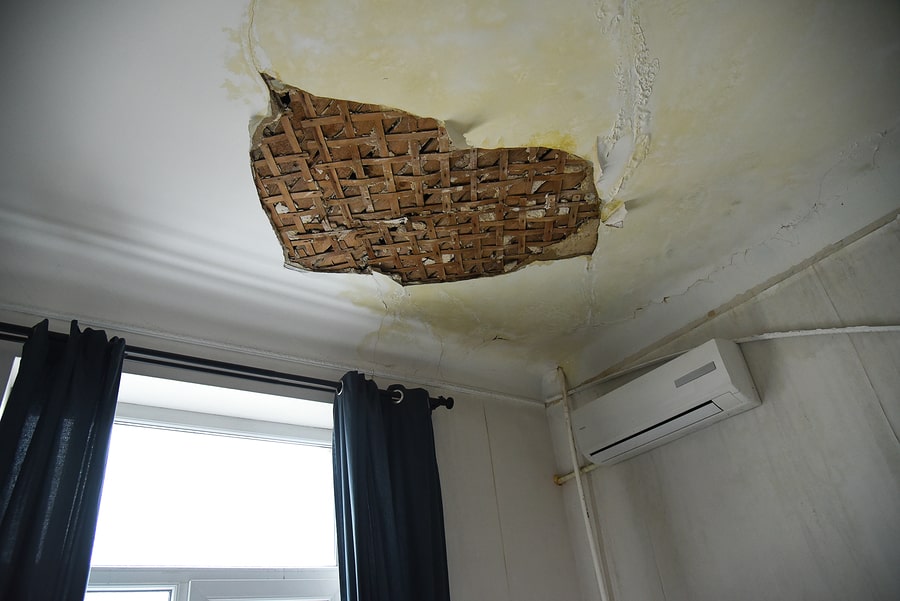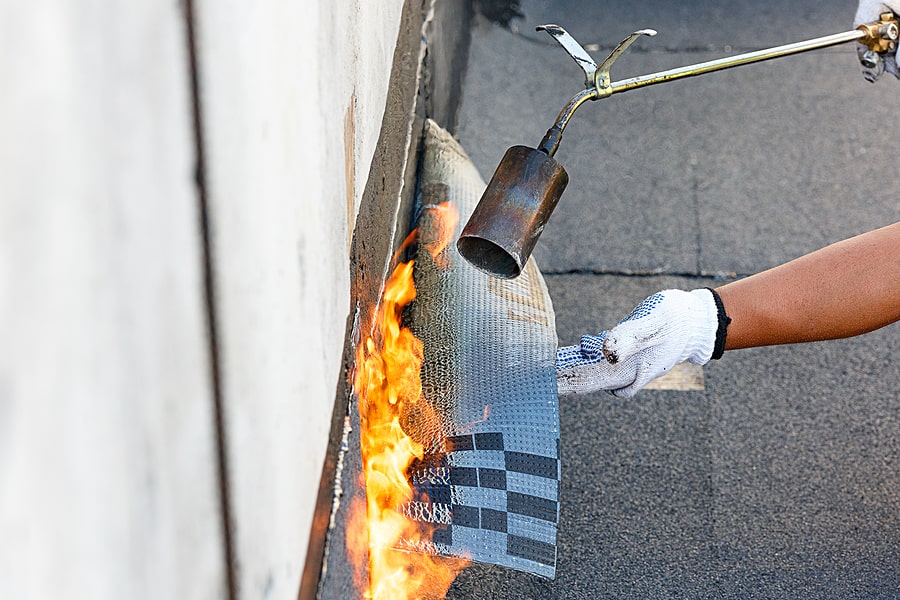05 Mar What is Waterproofing?

Did you know that the majority of all reported building damages stemmed from water related causes?
An Overview of Water Damages
According to numerous studies complied from insurance companies, more than 1 in 3 homeowners will claim for suffered losses from water damage. Furthermore, about 20% of all insurance claims were related to compensation for water damage.
Common Causes of Water Damage
Water damage may arise from various circumstances. Most commonly, these include:
- Roof leakages
- Basement water seepages
- Water heater and washing machine failures
- Pipe leakages
- Running toilets
Together, these damages amount to billions of dollars in property losses globally each year. On the bright side, 96% of the reported water damages in the studies were found to have been preventable. In particular, good workmanship and regular maintenance of waterproofing systems were determined to be key obstructions to water leakages.
What is Waterproofing?
Waterproofing works is carried out by specialist waterproofing contractors, protecting your building from water penetration and damages. In particular, it prevents water penetration into the infrastructure, be it internally or externally.
When done right, waterproofing works are a silent hero, going unnoticed but playing a vital role in protecting your building.
Why is Waterproofing Needed?

We seldom devote much thought to the constant presence of water in our everyday environment. Yet, water is very much all around us. Be it in the form of falling rain or moving water within the pipes or appliances in our buildings, we are constantly surrounded by water.
Given water’s constant presence, our buildings are then at great risk of water penetration from a multitude of places. The danger of water leakages stems from side effects that emerge once it has entered a building’s infrastructure.
All buildings contain hidden space behind our walls, beneath the flooring and above the ceiling. These hidden spaces are devoid of light, thus when made damp from invading water, a highly moist environment emerges.
At this stage, the area becomes ripe for mould growth and decay. Over time, mould weakens the structural integrity of your building, thus compromising the safety of all inhabitants in the vicinity.
Types of Waterproofing Materials
Many different waterproofing materials exist, each suitable for a different situation.
- Epoxy resin can be applied in several layers in order to create a water-resistant surface. Epoxy is relatively easy to apply but rigid, thus thermal expansions and contractions may cause it to crack.
- Polyurethane is useful for filling capillary cracks. Its advantages lie in it being both water and vapour proof. However, it is on the more expensive side of the scale.
- Cementitious coating is a mixture of sand, chemicals and silica-based substances. It prevents water leakages by causing a hydration reaction. Unfortunately, it can be relatively inflexible.
- Thermoplastic material is a durable waterproofing solution. When heated at the right temperature, thermoplastic becomes semi-solid, allowing you to seal sheets together. On the downside, thermoplastic is expensive.
- Waterproofing membranes are the preferred option amongst waterproofing contractors due to its reliability, durability and affordability.
An Introduction to Waterproofing Membranes

A waterproofing membrane is a special material which when applied over a surface, helps to repel water. It can be utilised in a variety of situations including that of application to the foundation of buildings or to that of the roof.
There are two types of waterproofing membranes that are most commonly applied – sheet based and liquid based membranes.
Sheet Based Membranes
Sheet based membranes come packaged as a roll of sheet, ready for application by waterproofing contractors. Waterproofing contractors can then unroll the sheet and use a blowtorch or hot air gun in order to attach it to the surface.
Furthermore, heat is also used to melt and fuse different layers of sheets. This ensures that no gaps or leakage points can be found between the sheets.
The advantage of using a sheet-based membrane lies in its speed of application. Since the sheets have been premanufactured with standardised dimensions, contractors can plan and apply it relatively quickly.
However, sheet-based membranes are relatively inflexible given their standardised dimensions. This makes their application limited in irregularly shaped areas or in gaps that are smaller than the standard width of the sheet.
Liquid Based Membranes
The flip side of sheet-based membranes is liquid-based membranes. This liquid solution is commonly applied via a roller brush, with the liquid being cured when it comes into contact with the air.
The challenge of application comes from needing a consistent and complete application of the liquid membrane. Experience working with the material is crucial here as an uneven application could result in future leaks.
Equally important is that each layer is completely laid in a single application. Completing the layer in a single application prevents cold joints and inconsistent curing. In turn, this reduces the risk of gaps being formed.
Compared to sheet-based membranes, liquid-based membranes are much more flexible. No mater the shape or size of the area, liquid membranes can be effectively applied. In particular, protruding objects from roofs such as pipes require the use of the liquid variant given their uneven surfaces.
On the down side, liquid-based membranes require more time, effort and skills to apply. Contractors may have to cover large surface areas with their brushes, while ensuring proper application at all times. This makes for a more tedious and technically challenging task.
Correct Usage of Waterproofing Membranes

While waterproofing membranes are highly effective in preventing water penetration, it cannot work alone. Like any other material, it will suffer from leaks if left in poor conditions for a long time. As such, it is critical that proper workmanship, planning and maintenance is carried out.
During the construction stage, it would be ideal if the rain exposed surface is planned to be inclined or sloped. The slanted angle allows for natural water runoff, hence reducing the possibility of ponding or water stagnation. These two situations have the capability of wearing down the membrane.
In particular, when ponding occurs, the waterproofing membrane will be placed under tremendous stress. If a pond is allowed to be formed for prolonged periods, water will eventually seep past the membrane.
Other than having a slanted surface, we recommend that regular checks be made on weather exposed surfaces. In particular, you should be vigilant of designated water runoff paths and the subsequent drainage points.
Drainage points are prone to choking from foreign debris such as fallen leaves or litter. When this happens, water will not be able to drain off from the surface efficiently, thus leading to ponding in the long run. Regular clearing of any such chokes will help to preserve your waterproofing system.
Trust TAC Contracts for Your Waterproofing Needs
TAC Contracts is an established and trusted waterproofing and repainting contractor. Over many years we continuously provided our customers with high-quality workmanship at very reasonable prices. Our experienced contractors and specialists can help you in identifying, analysing and resolving your waterproofing issues. We use high quality waterproofing materials and recommend the appropriate waterproofing membranes for your building.





No Comments